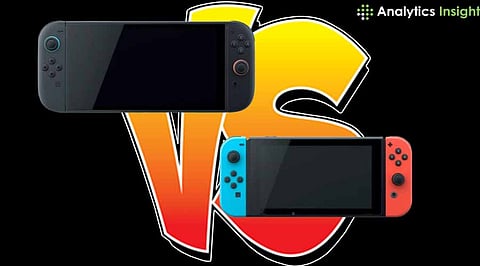

The handheld console market wasn’t empty before 2017, but there were significant gaps between expectations and reality. The release of Nintendo Switch in 2017 has bridged that gap and provided players with a seamless gaming experience without lags and connectivity issues. To be precise, the introduction of Nintendo Switch has revolutionized the gaming industry with its design and features.
Over the years, Nintendo has brought different versions of this popular console to capture the market, and most of them offered gamers necessary upgrades in performance and features and enhancements in design. The upcoming one in the lineup, Nintendo Switch 2, is also designed similarly. It is about to hit the market on June 5, so here’s a brief glimpse of how these consoles have evolved over the years.
Here’s a brief description of how Nintendo Switch models have evolved in features and pricing starting from 2017.
Original Nintendo Switch (2017): When the first Nintendo Switch console was launched, it was launched at a price point of US$ 299.99. Among the notable features, the OG console used to feature a 6.2-inch LCD screen and detachable Joy-Con controllers. The primary reason behind its widespread success is its innovative design and massive gaming library.
Nintendo Switch Lite (2019): Two years after the Nintendo Switch, Nintendo Switch Lite appeared. To make the Switch consoles more affordable for everyone, this version was launched at US$199.99. The best part was that this Switch model appeared with a more compact design that eliminated the detachable Joy-Cons and TV connectivity and focused completely on portable play.
Nintendo Switch OLED Model (2021): The third entry in this lineup is Nintendo Switch OLED. Introduced at a price point of US$349.99, this console offered gamers an enhanced visual experience with its 7-inch OLED display, improved speakers, and a refined kickstand.
Nintendo Switch 2 (2025): The upcoming Nintendo Switch 2 is about to launch at US$449.99. The features and specifications it has shown are promising, which justifies the price point of the console.
Here’s a comparative discussion of Switch 2’s features with its predecessors to understand the evolution in a better way.
Screen Size and Quality: The upcoming Switch 2 possesses a 7.9-inch 1080p LCD screen. Additionally, it is bringing HDR support and a 120 Hz refresh rate that offers a more immersive and fluid visual experience.
Build and Portability: Even with its larger screen than its predecessors, this console totally maintains the portable factor. In fact, with its adjustable kickstand, gamers can use it stably for tabletop gaming.
Processing Power: Switch 2 is coming with a custom Nvidia chipset that promises to enhance performance with support for 4K resolution at 60 FPS. This is going to be a significant enhancement from its predecessors.
Storage Capacity: The internal storage of Switch 2 has been expanded to 256 GB, which is a substantial increase from the original Switch’s 32GB storage. It clearly says the upcoming console will offer a more immersive library.
Game Support: Backward compatibility is something that sets the console apart from its predecessors. This was a newly introduced feature that will allow Nintendo Switch gamers to enjoy their existing library on the new console. Well, some older titles may face some compatibility issues, but most games will run smoothly.
Launch Titles: Finally, this console will get Mario Kart World as its launch title, which further points out its capabilities.
The Nintendo Switch consoles have a separate fan base across the world, and that’s mostly because of their wide gaming library and smooth gaming experience during travels. With each new model, Nintendo has aimed to achieve more perfection in design, performance, and functionality to increase the fan base. Similarly, the Switch 2 is bringing significant advancements to take the gaming experience on Nintendo Switch to the next level with a high-resolution display, improved processing power, expanded storage, and innovative controller features.
